Camps with wolves
We were camping wild in the bush but we were not alone. Julie spotted him first, a large grey wolf appearing on the hillside near our camp, the bloody results of his hunting skills hanging from his mouth, staring at the strangers who had entered his domain. He disappeared for a moment but reappeared soon after, staring at us, sniffing the wind, trying to assess the situation and plot his next move. He was huge, much bigger than expected, with a mix of light grey and darker grey fur. Here was one of the world’s most awesome apex predators, a magnificent beast, circling our camp. He came and went a couple of times as we put more wood on the fire, continuously checked the gravelly slopes around us and nervously making wolf jokes. Welcome to the wild frontier of Labrador.
At about 10pm, the light finally fading from the skyline along with our ability to spot our new friend, he surprised us by reappearing behind us, where we hadn’t been looking, sitting on a low ridge about 100 metres away and started to howl. He sat up on his back haunches, stretched out his long neck and let out the most beautiful – and somewhat scary – howl that we could ever imagine. He was letting us know in no uncertain terms that we were in his patch, grazing on his paddock, playing on his home field, and he wasn’t happy about it.
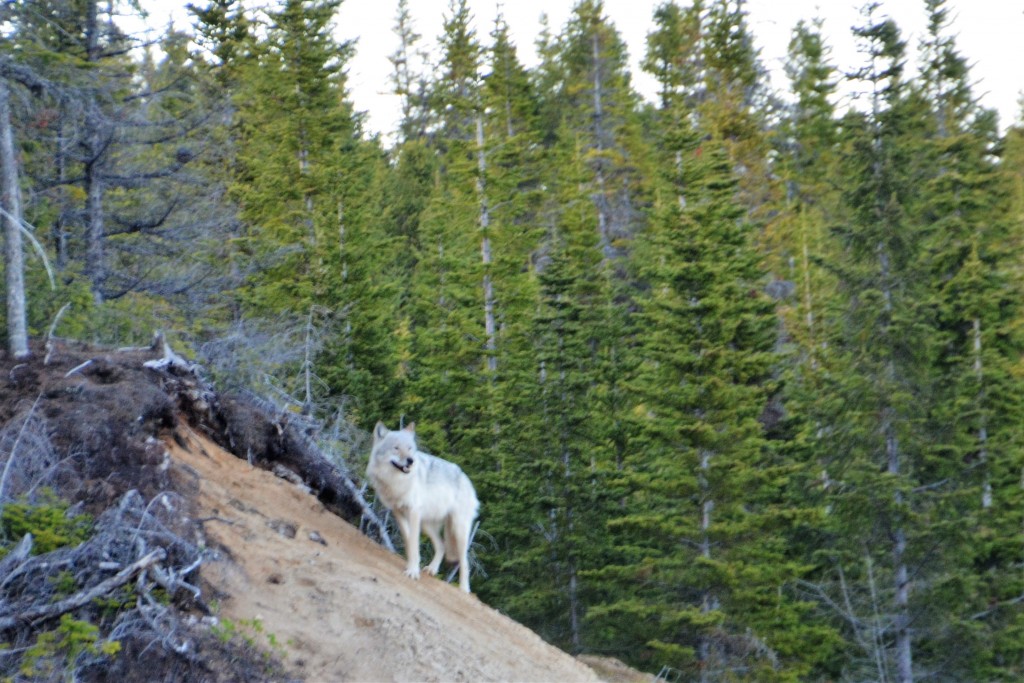
Our new friend showed signs of curiosity, confusion and perhaps a bit of anger that we were camping in his exclusive domain
It was an extraordinary experience, a little frightening for sure but we knew he wouldn’t come much closer and we always had Tramp as a final back up plan. But to be in this wild empty land with its sparse forest, huge granite mountains, large snow patches and fading evening light while a wolf was howling directly at us in his mournful, raw and beautiful voice was one of the most exciting and exhilarating moments of our camping lives. And to top it all off, a few moments later another wolf gave his supporting reply from further off, maybe saying something like ‘we’re with you mate, if you want them for breakfast just let us know and we’ll join the festivities’. Or something like that.
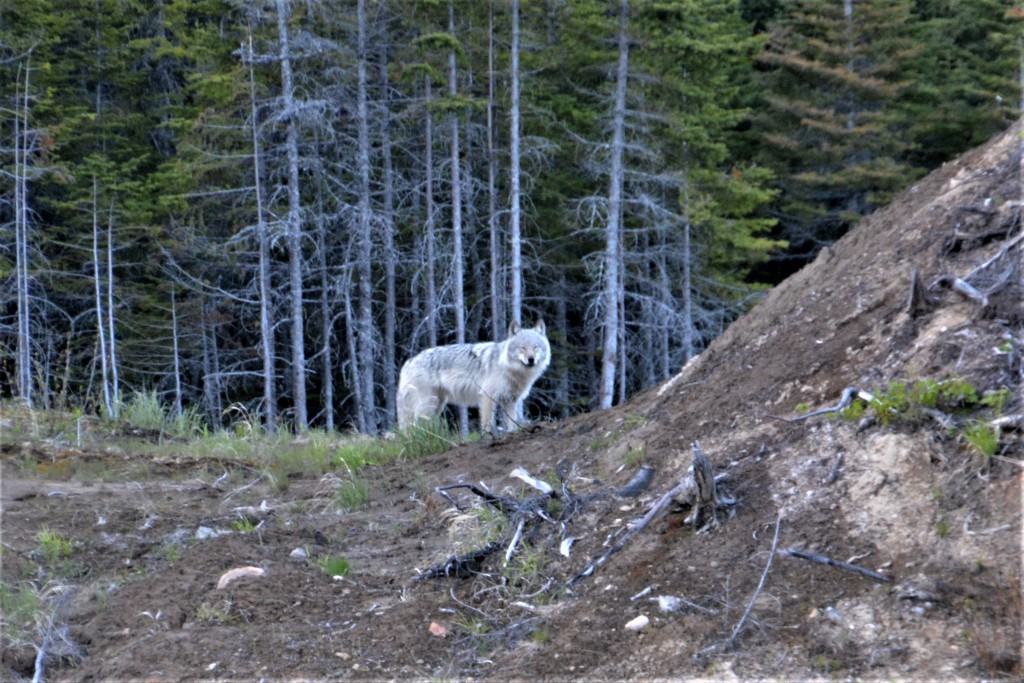
The grey wolf was much bigger than we would have expected and certainly had a king-of-the-castle air to himself
Labrador is the poor cousin in its provincial partnership with Newfoundland. It is nicknamed The Big Land and basically has only one road through the entire territory, much of it rough gravel. The largest town in Labrador has only a few thousand people and most of them are there because of the old military base. It is a land of few resources, harsh cold weather and minimum natural attractions. The few little fishing communities on its northern coast are only reachable by boat. The provincial park we were going to camp in on our first night was still closed due to excessive snow and this was mid June. And that’s how we ended up finding a beautiful campsite in an old abandoned quarry and managed to seriously upset the wolf that resided nearby.
Our plan now is to head westward, more or less, across Labrador, Quebec and beyond. But Labrador is huge, really huge, and it would take us a few long driving days to cross its frontier land. Our first stop was Red Bay the town at the end of the paved road and a world heritage location for its discovery and preservation of three boats and the community of Basque whalers who made this their summer home from 1540’s to the early 1600’s.
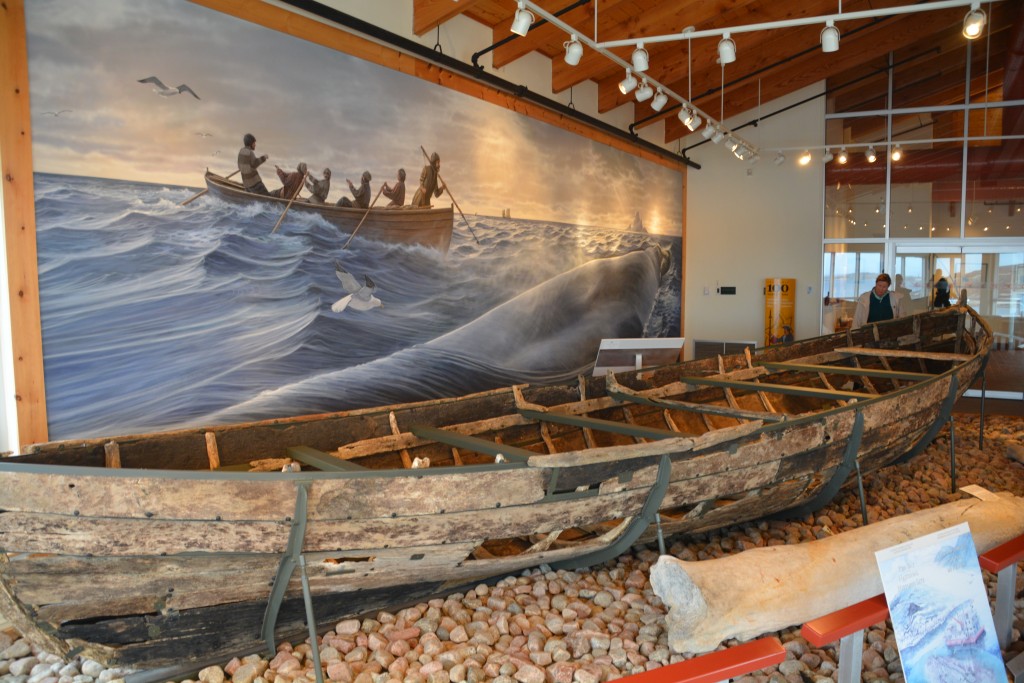
They were able to retrieve this original Basque boat from the cold waters of the bay dating back to the 16th century
Red Bay is a perfect harbour to protect sailing boats from that era and the Basques would sail from Spain in search of whale oil to bring home to use for light and heating. We toured the museum and then caught a little boat out to Saddle Island where they would ‘harvest’ the oil from the whales. Over the 70 or so years that this site and others on the coast were used it has been estimated that over 25,000 whales were killed for their oil. The whaling community of Red Bay would have up to 2,000 men and boys working there each summer. Amazing stuff.
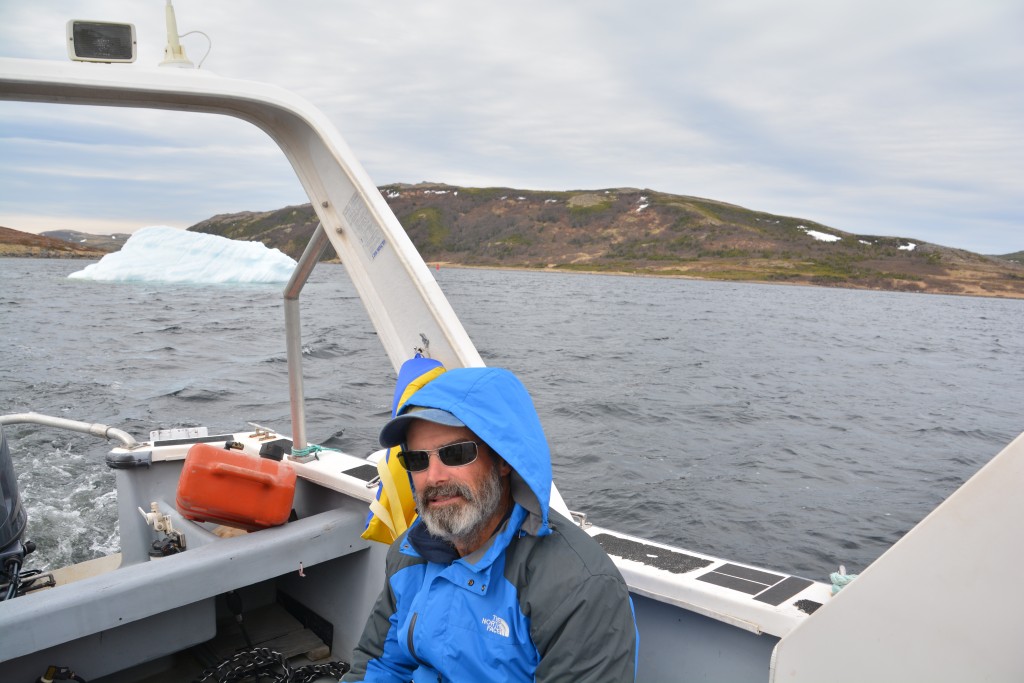
We took the little outboard motor boat past the icebergs to Saddle Island to explore the old whaling site
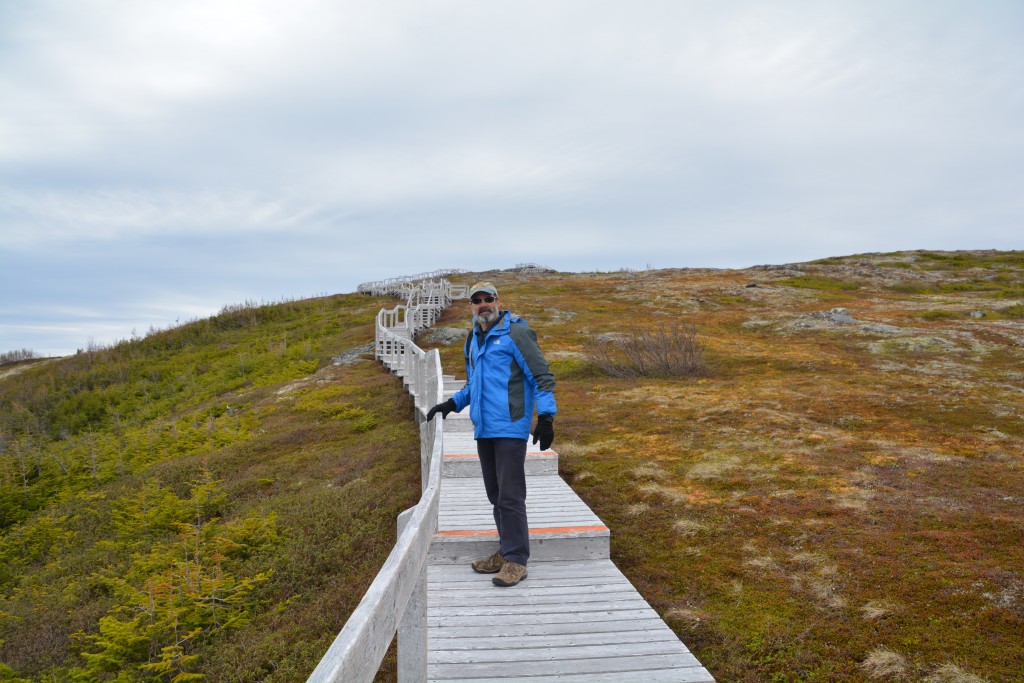
We did an awesome boardwalk walk up to the hill above Red Bay which gave us great views of the bay, island and coastline
Leaving Red Bay meant leaving civilisation with approximately 400 kilometres (240 miles) of rough gravel road and a total of 550 kilometres (330 miles) to the next major town. We filled our water tank and all our petrol tanks, stocked up on beer and hit the gravel, tracking north, rising up away from the ocean and crossing some of the most stunning landscapes we had ever seen. This was a land of few trees, rocky and inhospitable, covered in beautiful snow melt lakes with large patches of snow everywhere. The clouds were grey and the wind was filling the sails, all adding to these fabulous scenes.
There is something special about travelling through remote isolated places where few people live and even fewer visit. To see such vast land in its original raw form and have it seemingly all to ourselves was very special. If it wasn’t for a few road construction crews which were repairing the road from the harsh winter we probably wouldn’t have seen anyone for the first 80 kilometres.
The road travelled up and over the rolling mountains, dipping down to cross a snow melt river, then back up again to give us expansive views. We visited two small communities along the way, each nestled in at the end of a large inlet and neither of them had any paved roads to show for their commitment. When Main Street is pot-holed mud and dirt it’s time to move on.
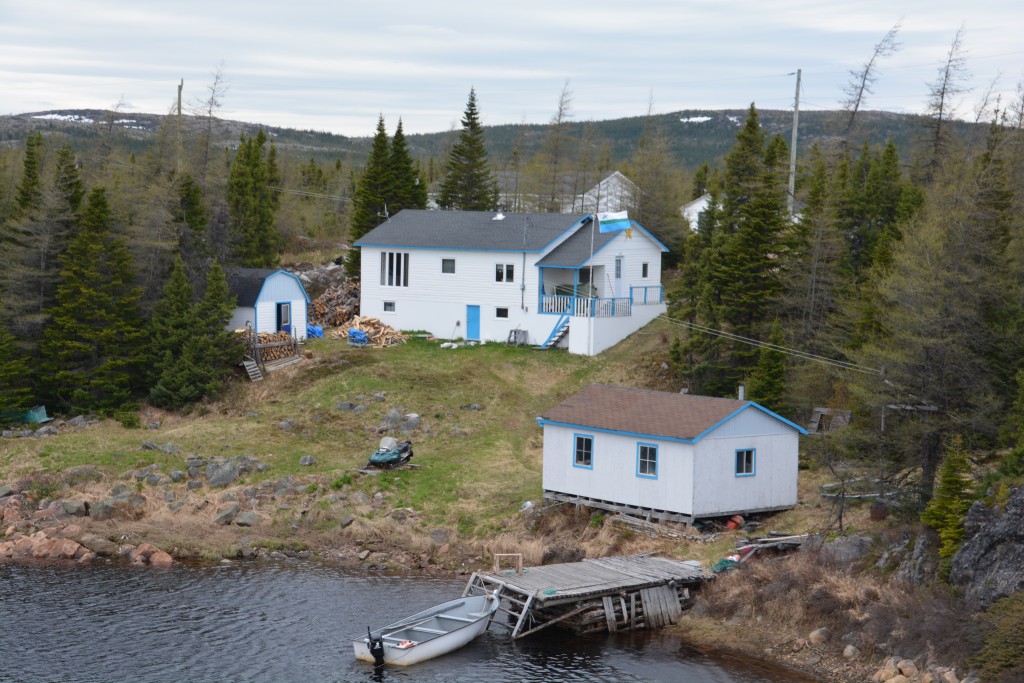
Most of the communities were small and run down but occasionally you see a place where some pride and love has been applied
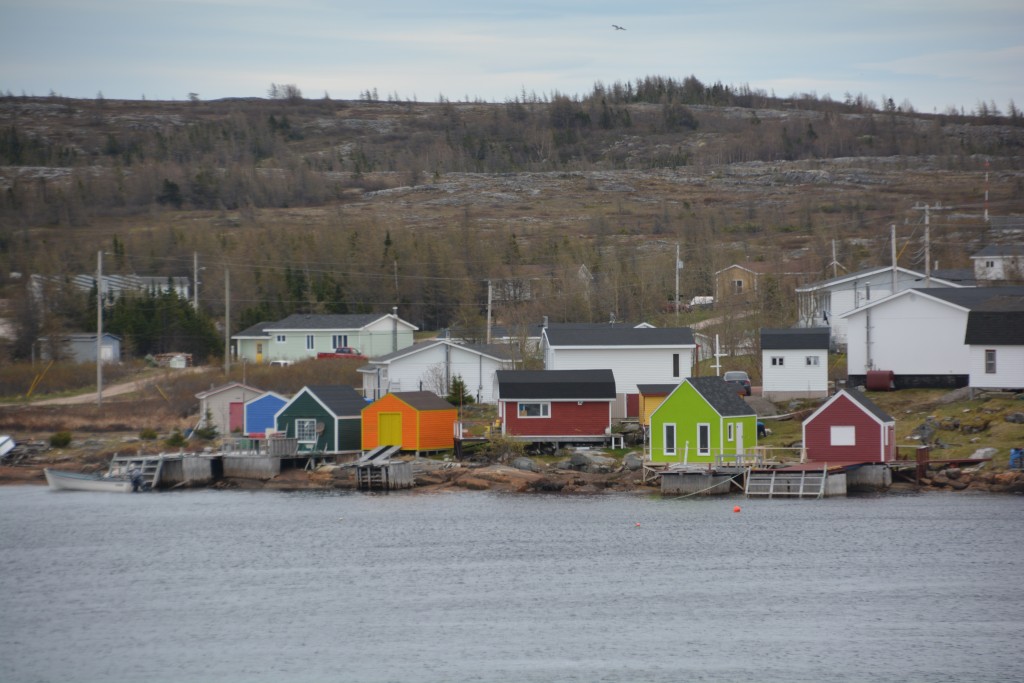
A little bit of colour makes a difference in forgotten communities which specialise in grey, white, and cold
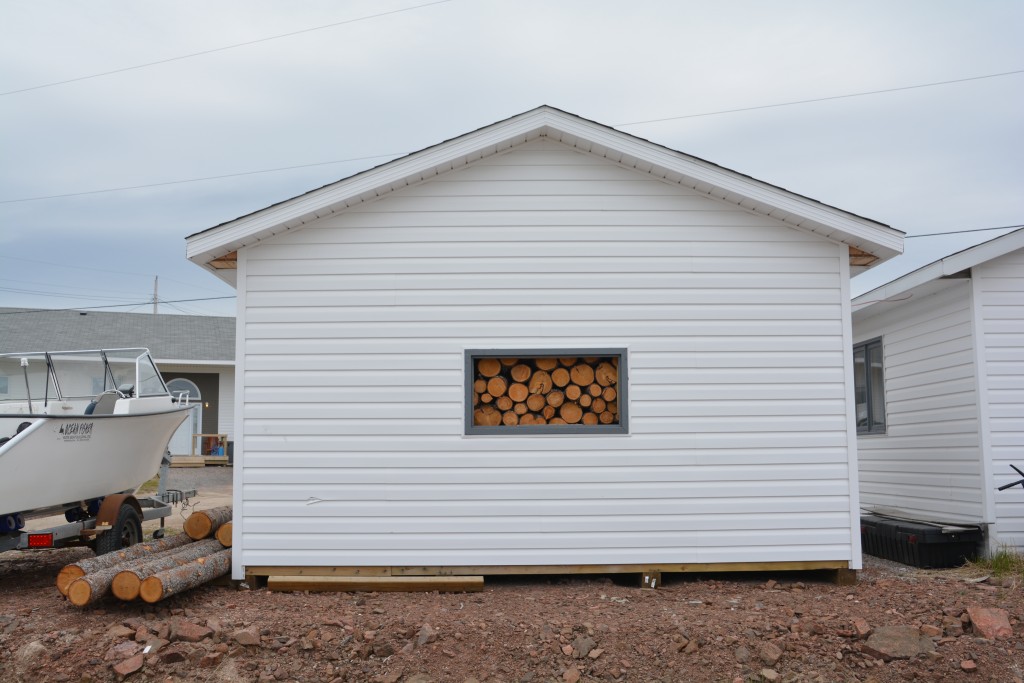
Last winter the boat was in and the wood was out – that didn’t work so this winter we’re swapping it
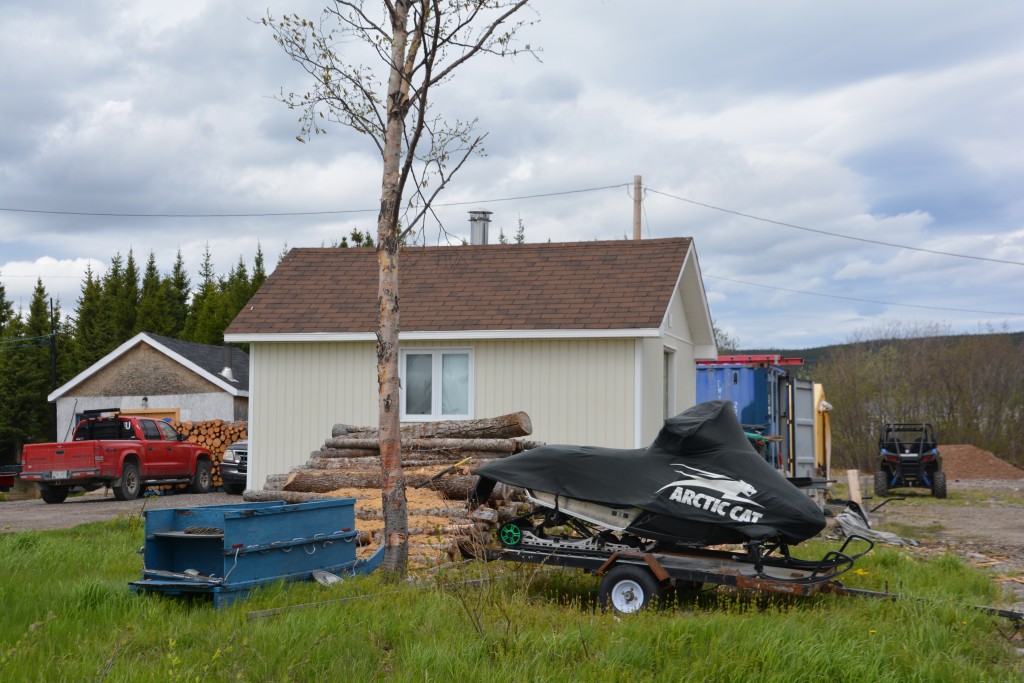
The quintessential front yard – ATV, snowmobile, sled, piles of wood and an old truck. This guy’s got it made!
We settled on a beautiful camping spot away from the road, high on a ridge overlooking two lakes and giving us open views of Labrador spread out below us. It was cold and the biting wind was no fun but the big fire and a hot curry saw us through.
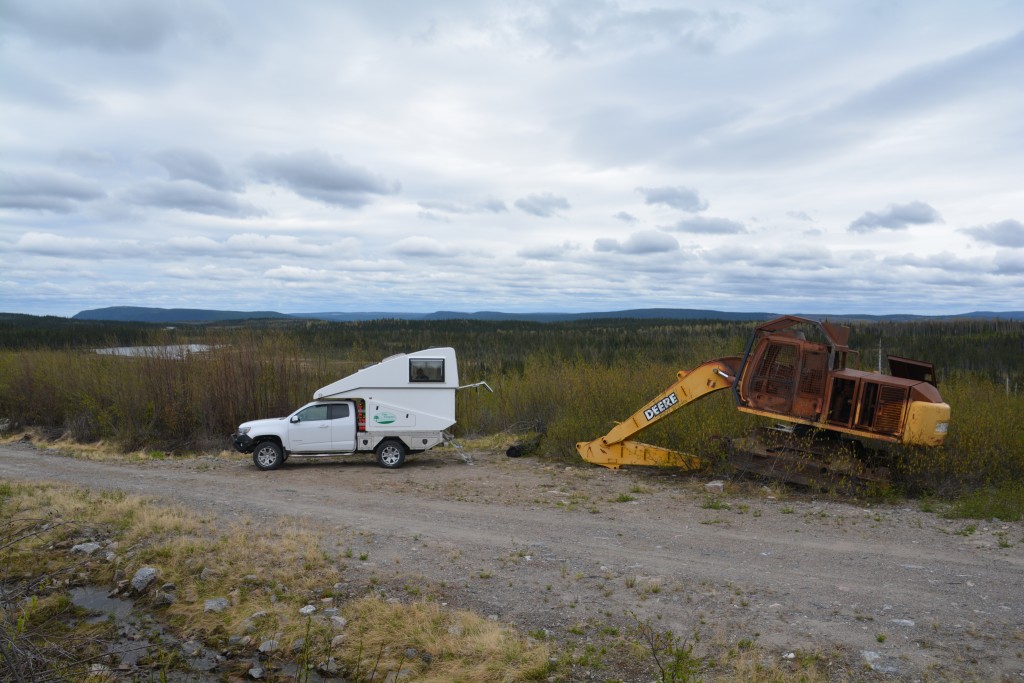
This old backhoe had been enjoying beautiful views on this abandoned logging trail for many years and we decided to join him
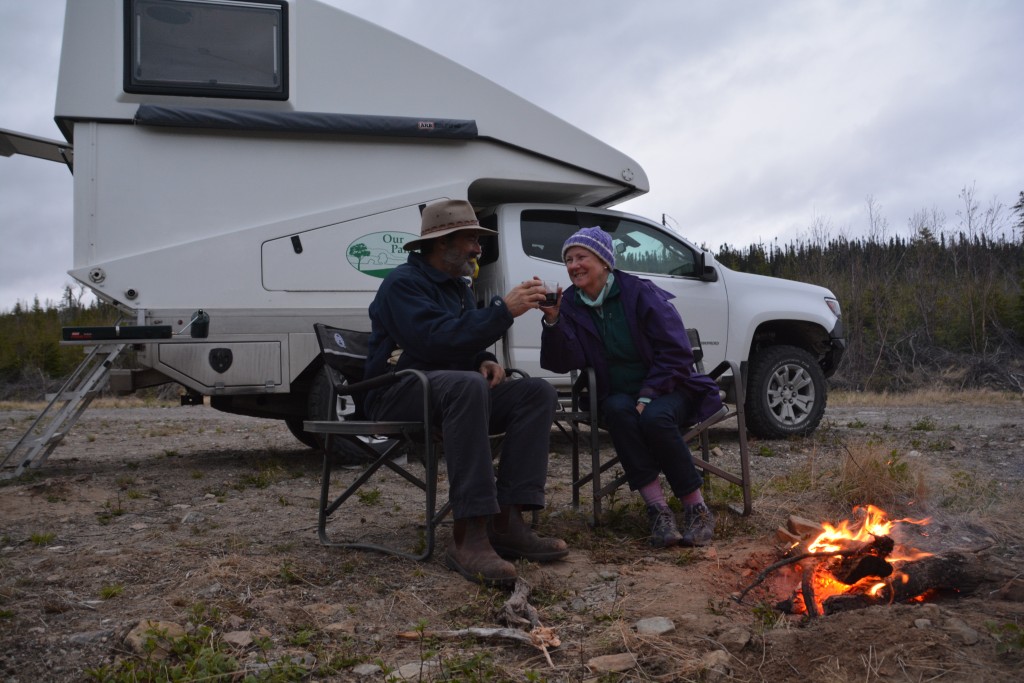
It was a cold and windy night but Julie and I celebrated Day 94 on the road, breaking our previous record of 93 days when we travelled around Australia a few years ago
The next day we continued on the gravel Trans Labrador Highway through thick impenetrable and inhospitable forests, passing a few lakes and crossing numerous streams along the way. The length of the drive, the amazing panoramic view from every ridge, the absolute remoteness of our location and the almost non-existence of other vehicles really drove home the point that this was The Big Land.
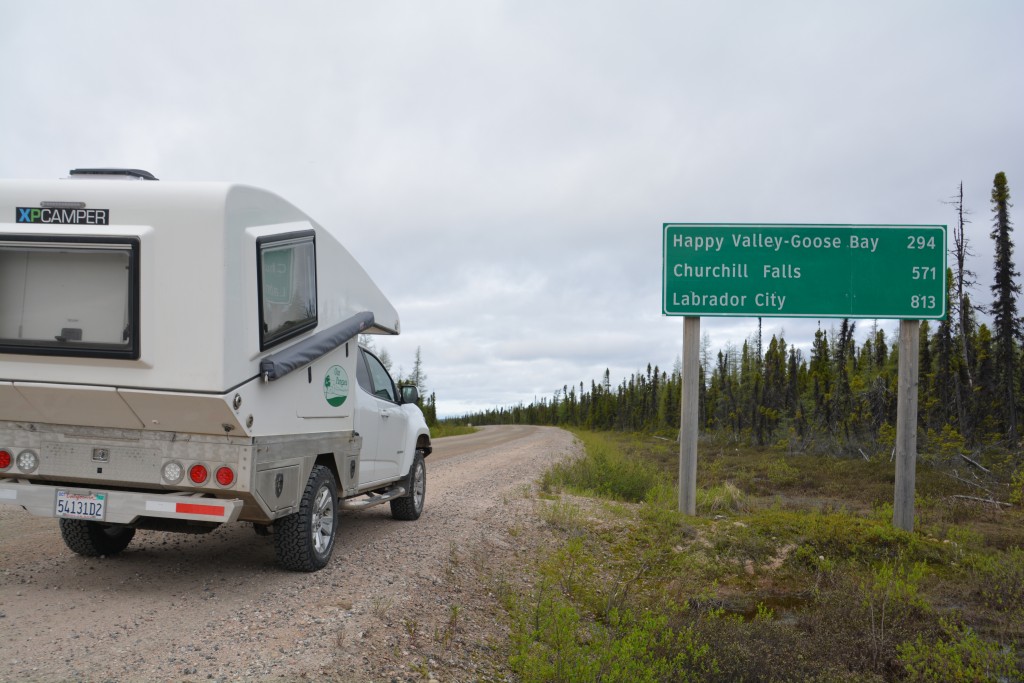
The distances between towns – and services – are big in these parts –
you need to plan ahead and e totally self sufficient
After more than 400 km on gravel road we reached the much anticipated double named town of Happy Valley-Goose Bay, a former military town which had a few thousand people and was the largest town in Labrador. We were hoping for a shower and a look around this special community on the edge of the continent’s northern arctic expanses at an amazing 53 degrees Latitude but what we found was a soulless and sprawling functional community with no tourism infrastructure and no obvious attempt to make itself special. And it was raining.
We camped that night further up the road on the banks of the Pinus River, a beautiful wide stream running over rounded river rocks, singing to us all night. But even better, near dusk a moose appeared downstream a short distance and slowly crossed the stream, taking his time to check us out, as we did him. Shortly later, while sitting around the fire about a metre from the shore, a beaver swam his way past us in the shallow waters of the shoreline, practically joining our camp. He swam upstream, floated down and then swam upstream right in front of us. A wild animal show just for us, courtesy of this wild frontier.
The drive into western Labrador was a case of beautiful sameness. The rolling mountains, thick endless forests of black spruce, occasional lake and numerous streams kept us fully engaged, although the continuous drizzle and rain proved to be a bit tiring.
We pulled into the hydroelectric company town of Churchill Falls, population about 600 – all of which are associated with the company one way or another – and found a dreary company town that lacked any colour or soul. Row after row of exactly the same houses with all the town’s businesses such as the grocery store, post office, motel and restaurant plus the town’s school all in one colourless building. Highly functional, especially in the bitterly cold winter but hard work.
The highlight of the morning was a beautiful walk out to see the Churchill River and the 300 foot Hamilton Falls crashing down into a narrow gorge below. It seems the lads running the big hydro dam control how much water comes out of the dam and it was obvious that sometimes the flow can be much higher. We also had the chance to walk through this dense black spruce forest and see it up close, including the thick cushiony forest floor covered in moss and lichens that were sometimes more than a foot thick.
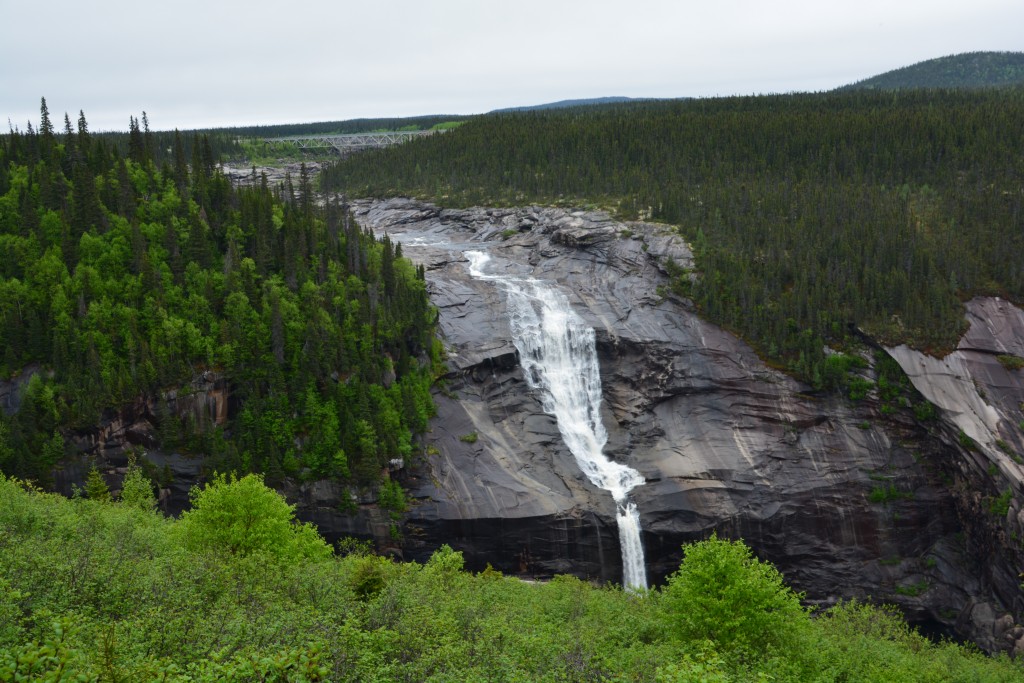
The huge falls at Churchill Falls was spectacular but the outflow is controlled by the hydroelectric guys
It was about 500 km (300 miles) to the border town of Labrador City, an iron ore mining community similar to the last two towns, that is – without character or appeal but highly functional for the 1,500 residents. We bought supplies and headed into the trees where we camped the night on a beautiful river near an old railway bridge. Two locals came by on their ATV’s to say g’day and one even invited us around for drinks and showers. The black flies were ferocious and the rain clouds dark and foreboding – in other words, all systems normal. Tomorrow morning we will answer the beckoning call of Quebec.
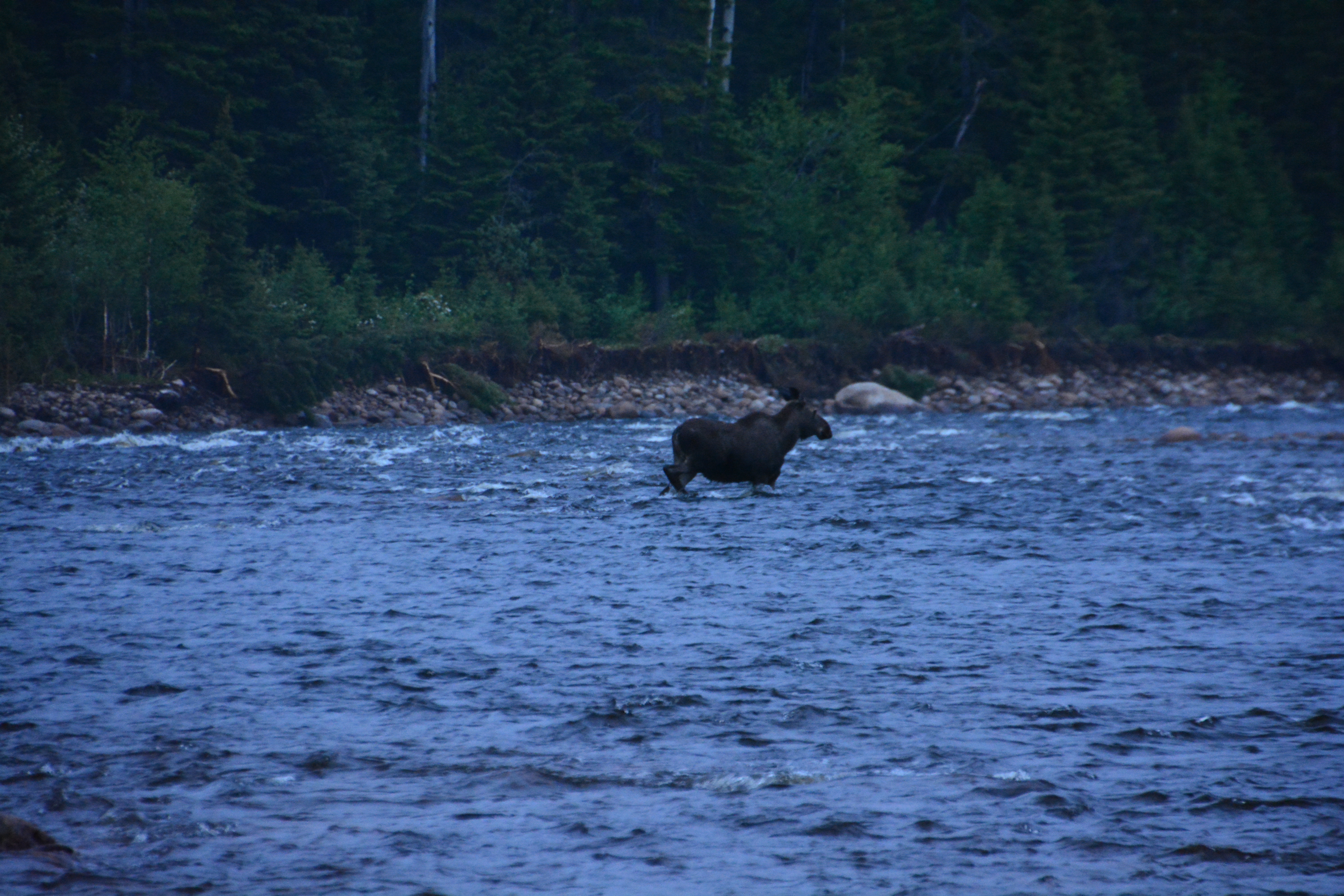
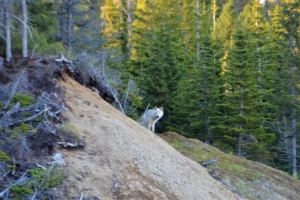
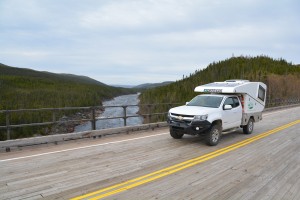
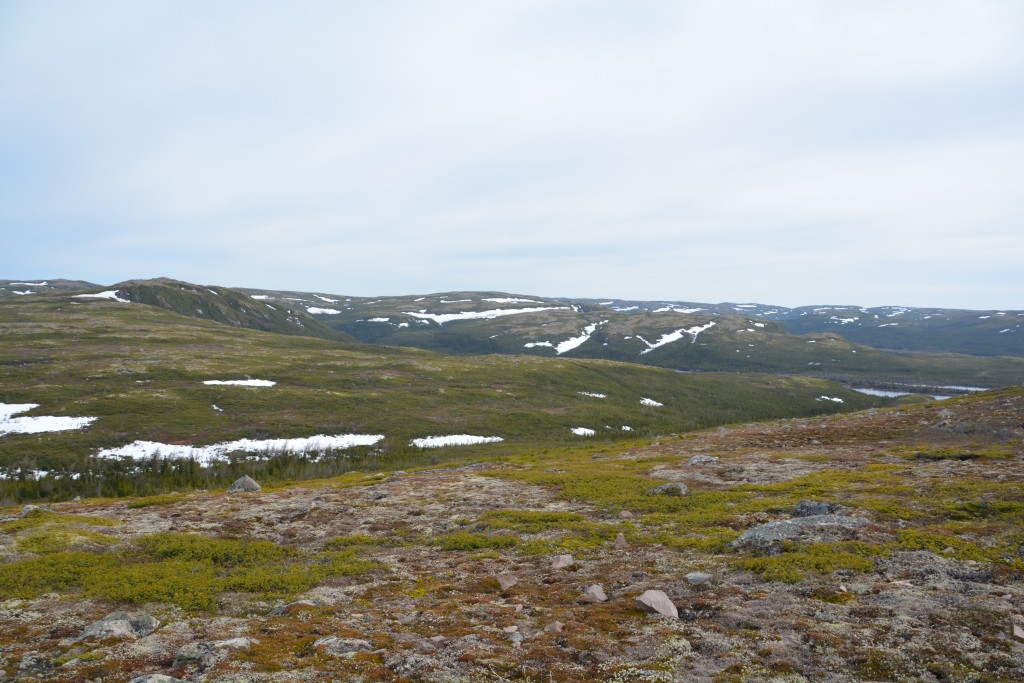
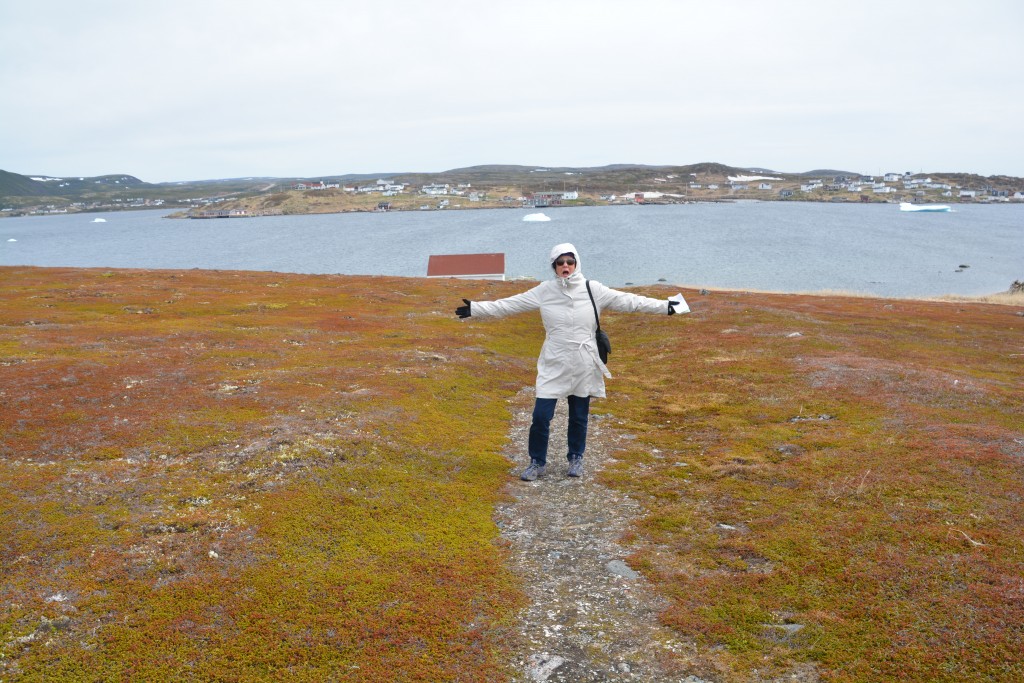
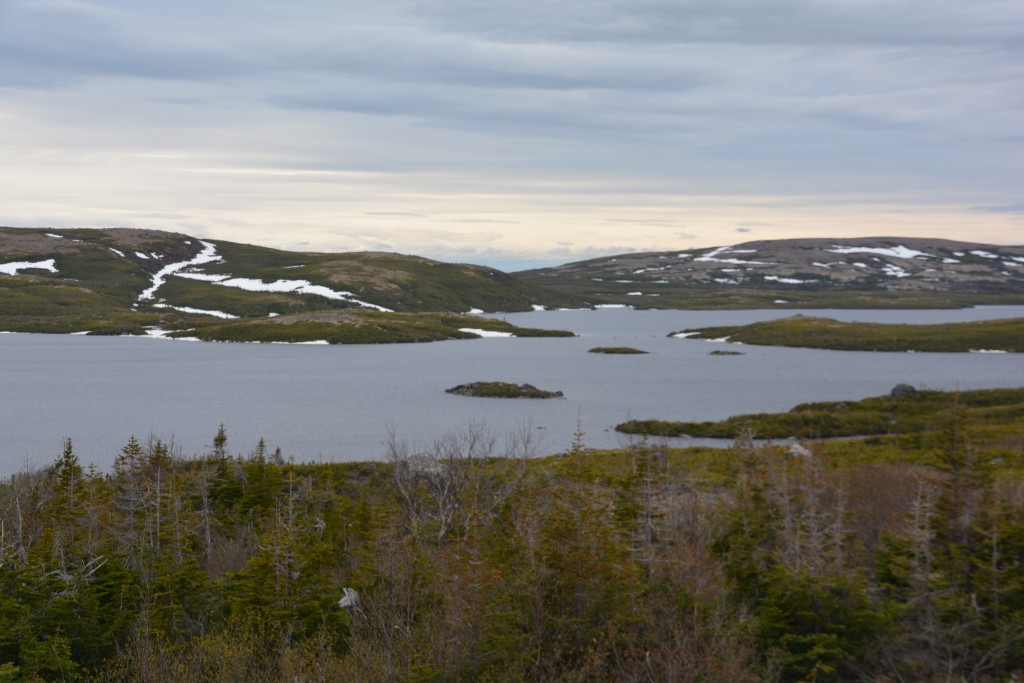
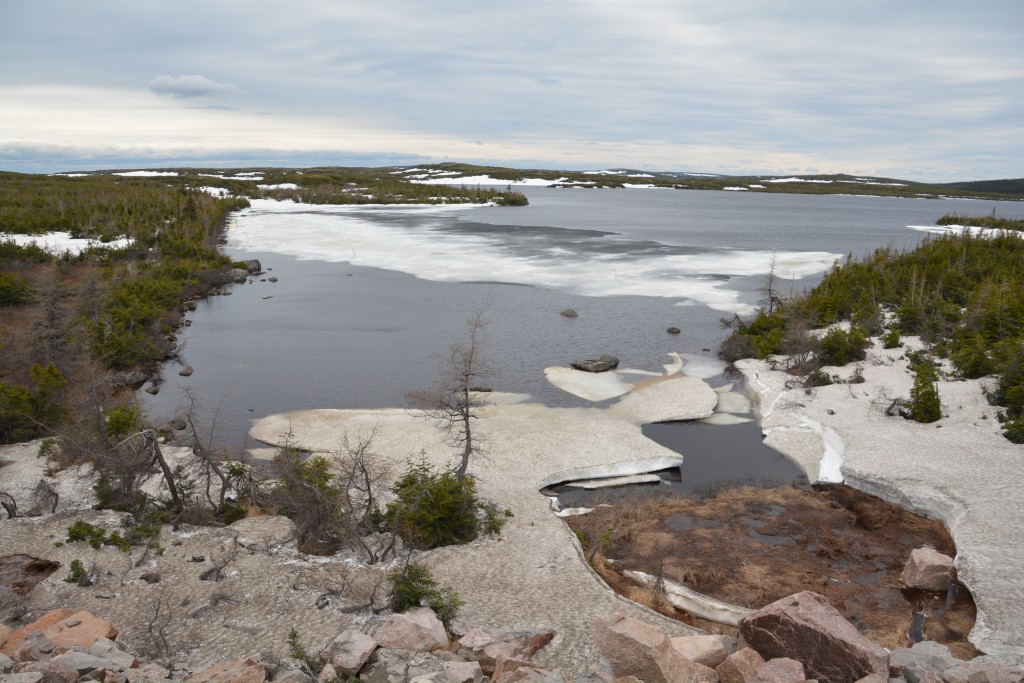
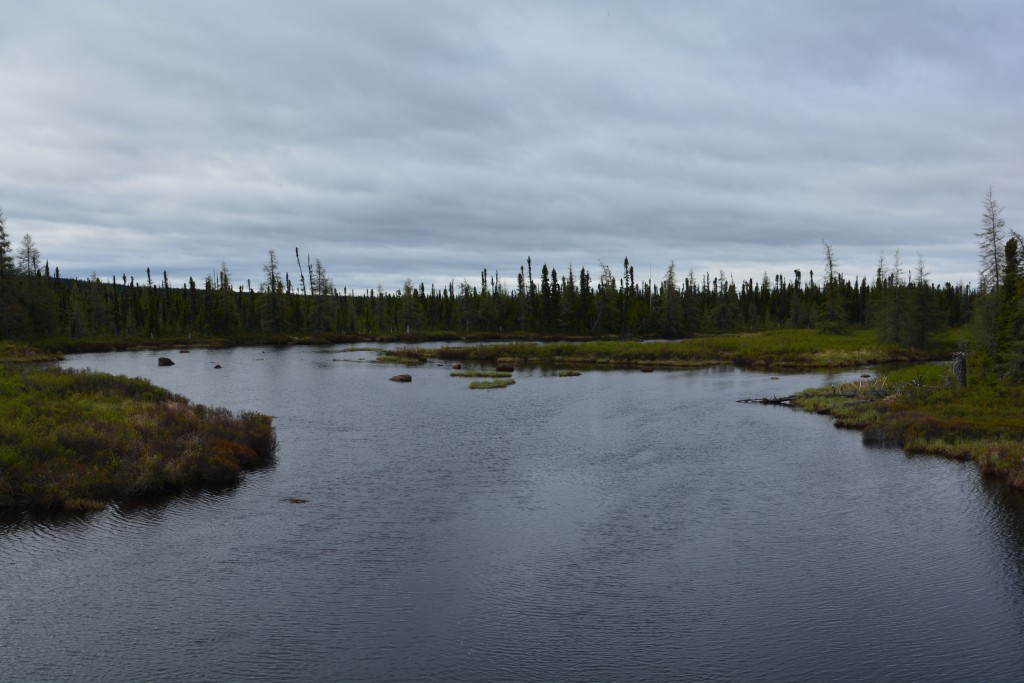
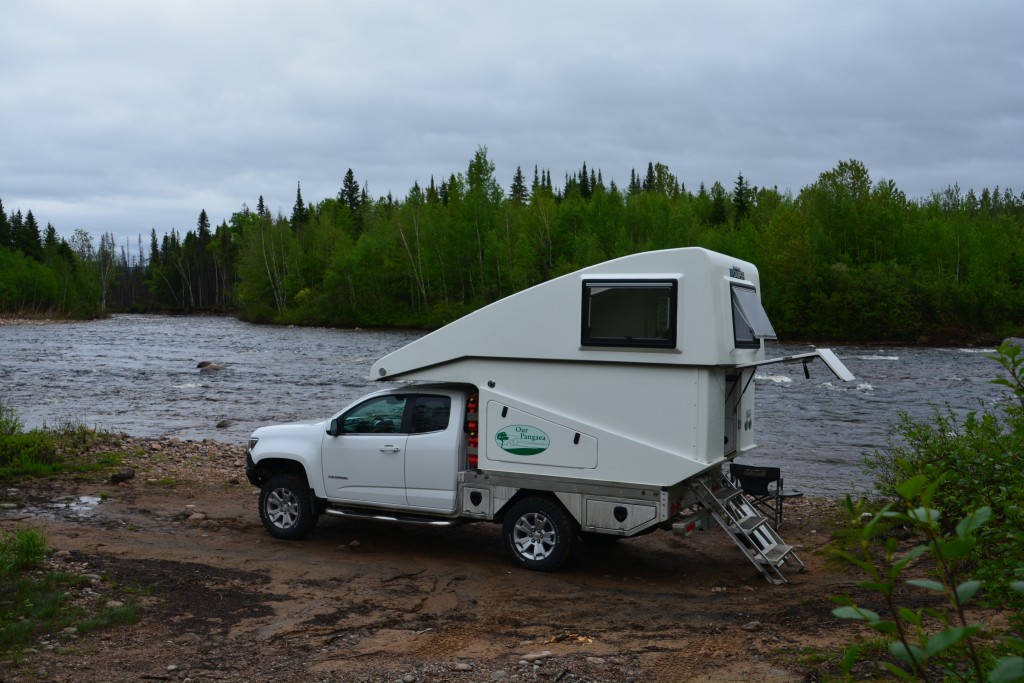
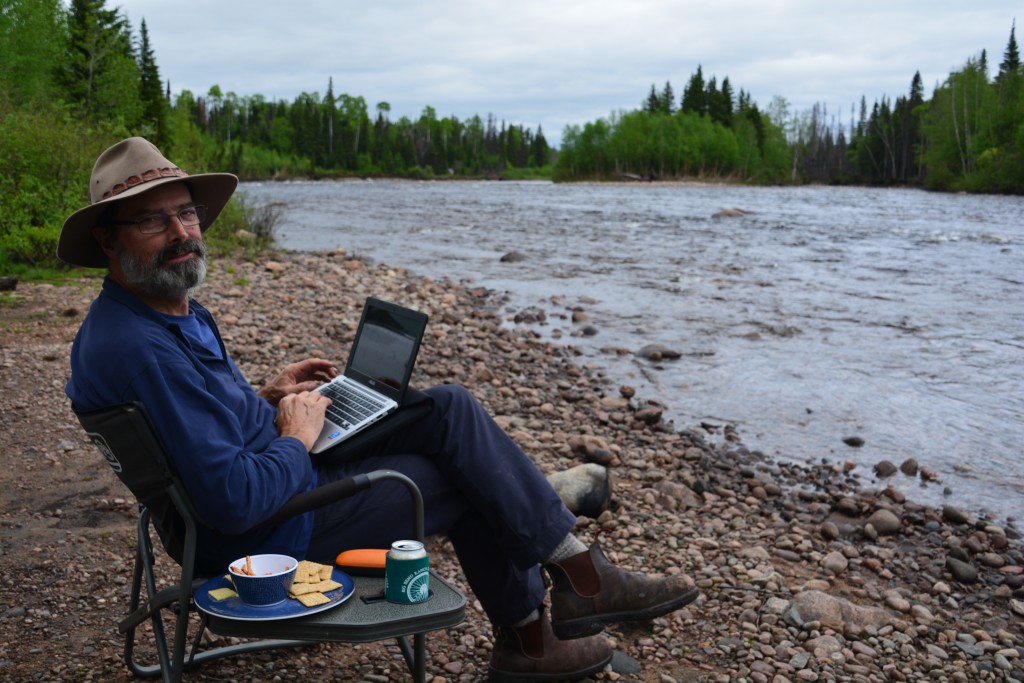
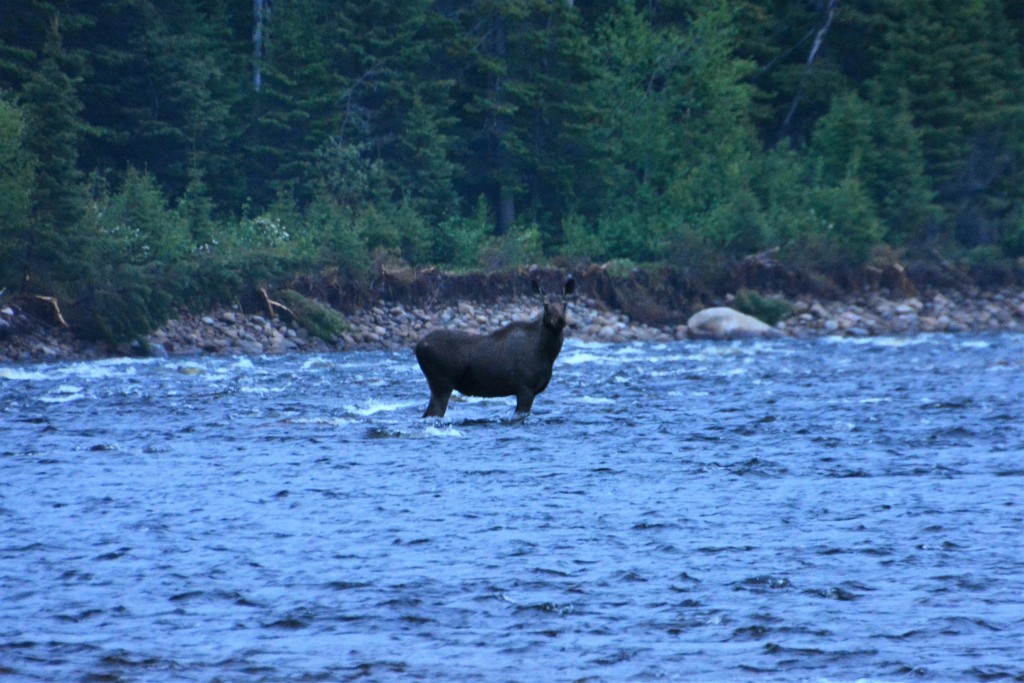
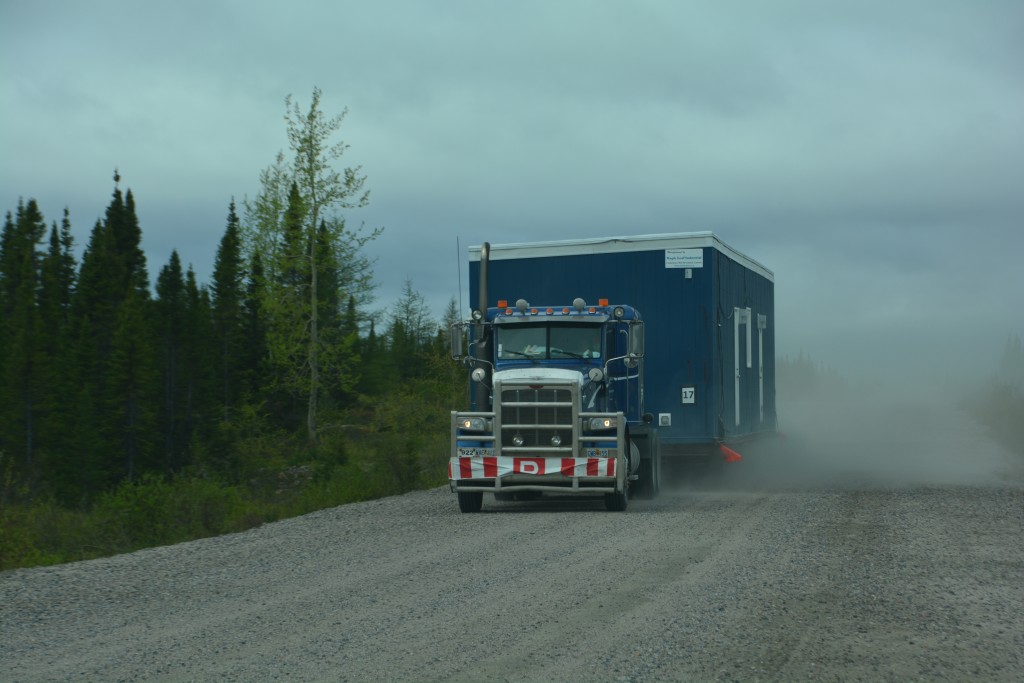
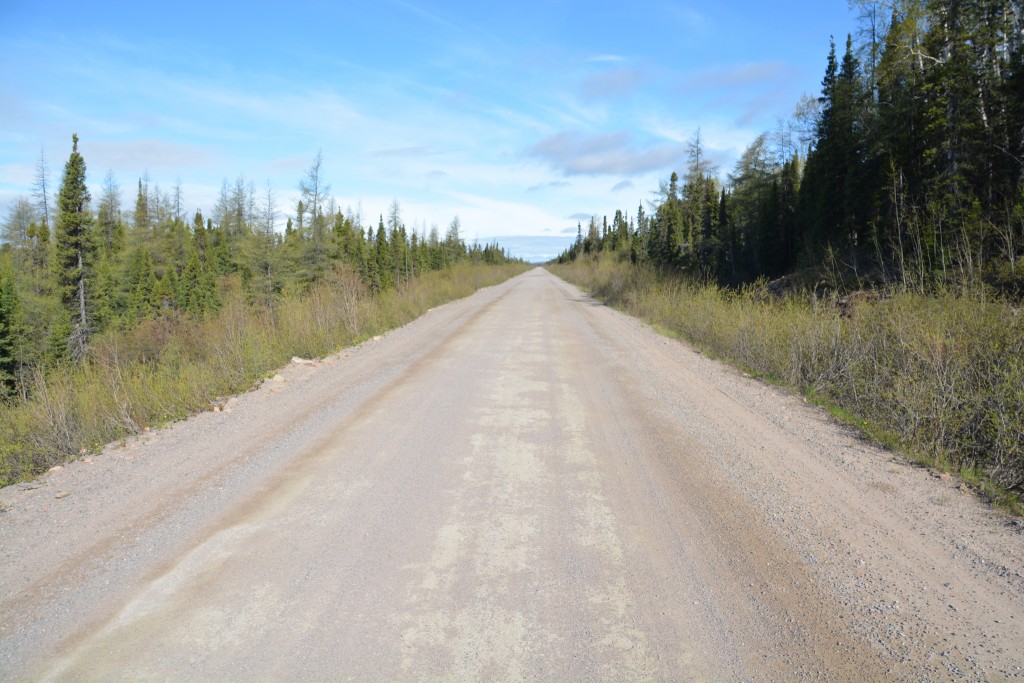
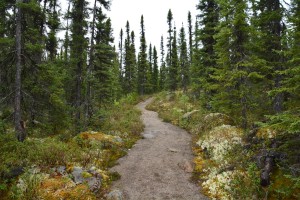
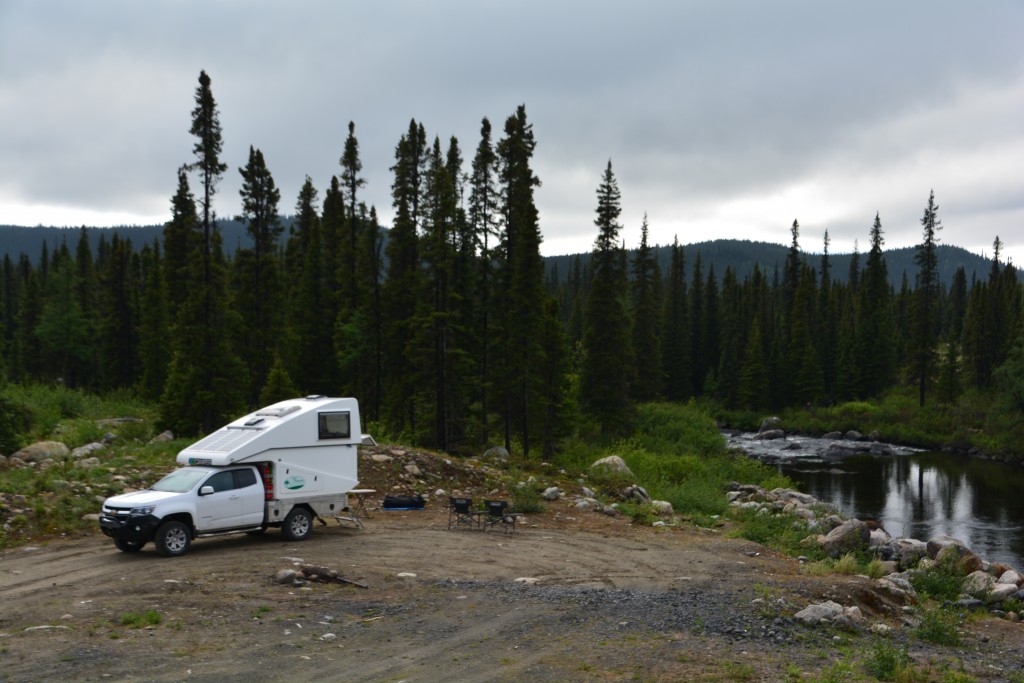
Hi to you two. I am loving the photos…..wildlife, wilderness and the great expanse of scenery. So hugely different to Australia.
Hope Anna is progressing well and staying healthy.
Stay safe and lots of love
Xoxo
Hi Anne, Canada has one thing in common with Australia – it is huge! But everything else is completely different and we’re loving it. We’d love to bring home some moose but we’ll be leaving the wolves up here! Bill
What amazing wildlife experiences you two are having. I’m also not entirely convinced that those are the same wolf either.
Congratulations of surpassing your previous record of nights on the road. So many great experiences ahead!
Thanks Zach. We wondered if they were all the same wolf, we think so because otherwise they would have had us surrounded. We don’t think bear spray works on wolves!